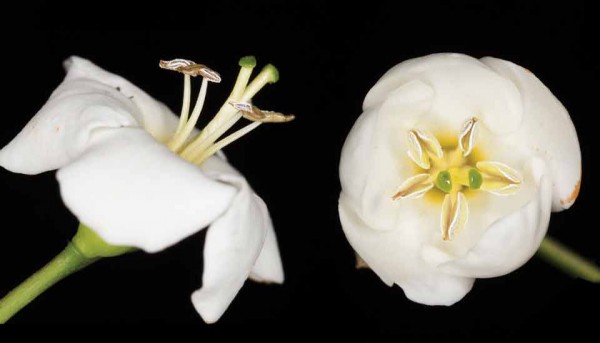Flowers from the Árbol del Hermano Pedro
The peculiar and long-lived esquisúchil tree (scientific name Bourreria huanita) is better known locally as the “Tree of Santo Hermano Pedro.” One was planted some 350+ years ago in front of the El Calvario church in La Antigua Guatemala. Saint Hermano Pedro de San José Betancur was the gardener and sexton at El Calvario between 1654 and 1658, giving rise to the tree’s popular name. Native to southern Mexico and northern Guatemala, it is considered to be on the edge of extinction. However, we were fortunate to find one tree in a private garden, and now with the assistance of Dr. Miguel Torres, we have found many more.
This species has been appreciated in Mesoamerica since pre-Hispanic times for its unique beauty and medicinal properties. Tea from the dried flowers are attributed various medicinal properties, mainly as a tranquilizer, analgesic and to control high blood pressure and heart disease. Scientists are investigating its antidepressant effect.
Although the esquisúchil tree is famous due to its association with Hermano Pedro, our interest at FLAAR is entirely because these flowers are a flavoring for cacao (a local predecessor of chocolate a thousand years ago). The flower is best known as a flavoring popular with the Aztec, but since the treesgrow in Guatemala (and Chiapas, Mexico, and El Salvador) you can assume that the Classic-period Maya were also familiar with its ability to be a flavoring. I have a note that in Copán pollen of Bourreria huanita was found to be indeed associated with the Classic Maya.
The tree blooms in May and June, but every year the climate deviates so the phenology will also vary accordingly.
Dr. Nicholas M. Hellmuth is director of FLAAR Reports (Foundation for Latin American Anthropological Research). Contact: frontdesk@flaar.org
